A HISTORY OF DESERT FISHES COUNCIL CHAIRS/PRESIDENTS
compiled by Edwin P. (Phil) Pister in November 1999 and subsequently maintained by the webmaster with material provided by each president.
An overall summary of early Council history is given in Chapter 4 of “Battle Against Extinction.” However, little attention is paid to Chairs/Presidents themselves.
The Council, although initially convened (Symposium I) in 1969, was not formally organized until the second symposium, held in November a year later (1970). Both were at National Park Service headquarters in Death Valley, as was the 1971 symposium. Phil Pister was elected Chairman in 1969 and handled the matter of formal organization during the ensuing three years, serving until November 1972, when the position was assumed by Chairman-elect James A. St. Amant. Initial Chairman-elect during Pister’s tenure began with Dale Lockard of the Nevada Department of Wildlife, who changed job assignments during this period and moved from Las Vegas to Reno. Dale passed away very tragically shortly thereafter and was succeeded as Chairman-elect by Jim St.Amant. A chronological listing and brief biographical sketch of Council leadership follows.
1969 to 1971. Edwin P. (Phil) Pister.
A fishery biologist with California Department of Fish and Game, supervising research and management of waters of the eastern slope Sierra Nevada mountains through Death Valley to the Nevada border, Pister became deeply involved in desert fish conservation issues during the mid-1960’s, largely motivated by near extinction of the Owens pupfish (Cyprinodon radiosus) during the latter part of the decade. His association with Carl L. Hubbs and Robert Rush Miller significantly influenced his entrance into the field of native fish management and conservation. Upon stepping down as Chairman in 1972, Pister assumed the role of Executive Secretary, handling most of the Council’s administrative affairs, a position he continues in today. He was also deeply involved in events at Devils Hole leading to a court hearing that began in July 1972 and culminated in the U.S Supreme Court decision four years later. Pister completed his graduate work under A.S Leopold, P.R. Needham, and R.L. Usinger at the University of California (Berkeley). Not dead yet (as of 4 December 2019 at 90).
1972 to 1973. James A. St. Amant.
Also a California Department of Fish and Game fishery biologist, Jim St.Amant bore the responsibility for southern deserts of California, including the Colorado River and Salton Sea, and extending to the Mexican border. In addition to his work with fishes, Jim was a primary founder of the Desert Tortoise Council and worked mightily to preserve tortoises and other desert life forms. He studied at Michigan State University, and is now retired in Arkansas.
1974 to 1975. Robert Rush Miller.
For many years a University of Michigan professor, and a graduate student of Carl L. Hubbs at that institution, Bob Miller described many native fishes of the Death Valley hydrographic area during his dissertation research. Later he did likewise for desert fishes in other areas of the Southwest. A professor emeritus at Ann Arbor, Dr. Miller continues actively in systematics and is currently completing a book on fishes of Mexico. A legendary scientist, conservationist, and collector, Miller’s research laid groundwork for much of the Council’s early conservation effort. As noted by Hendrickson et al. (2003. Reviews in Fish Biol. & Fisheries), “Bob passed away on February 10th, 2003, during his sleep. In his last years he lived mostly in his own imaginary world, usually collecting fishes. We are sure that, at the time of his death, he and Fran and perhaps some students were happily virtually seining a beautiful Mexican stream and probably discovering new species.”
1976 to 1977. James E. Deacon.
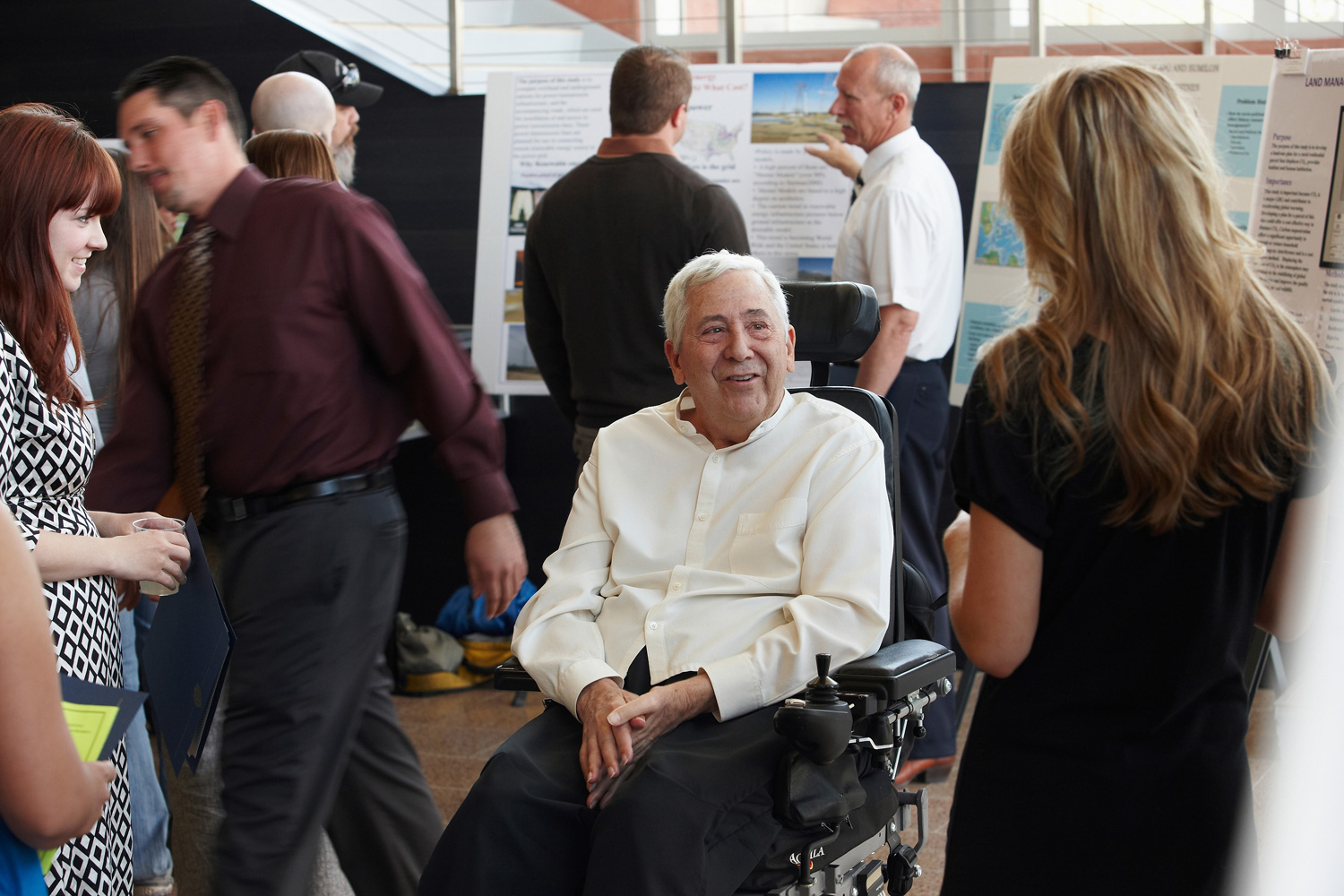 A pioneer in desert fish research and conservation and a professor at the University of Nevada (Las Vegas), Jim Deacon has published widely and continues actively in Council affairs. In addition to many other accomplishments, in recent years he left the Department of Biology and established and served as first Chair of the Department of Environmental Studies at UNLV. His former students have expanded his work as they have entered their professional careers. He guided early research at Devils Hole and was instrumental in legal proceedings that culminated in a favorable decision of the U.S Supreme Court in 1976, providing at least temporary protection for both Devils Hole and its endemic pupfish, Cyprinodon diabolis. Jim completed his doctoral work at the University of Kansas. https://www.hcn.org/articles/jim-deacon-pioneering-desert-fish-biologist-dies
A pioneer in desert fish research and conservation and a professor at the University of Nevada (Las Vegas), Jim Deacon has published widely and continues actively in Council affairs. In addition to many other accomplishments, in recent years he left the Department of Biology and established and served as first Chair of the Department of Environmental Studies at UNLV. His former students have expanded his work as they have entered their professional careers. He guided early research at Devils Hole and was instrumental in legal proceedings that culminated in a favorable decision of the U.S Supreme Court in 1976, providing at least temporary protection for both Devils Hole and its endemic pupfish, Cyprinodon diabolis. Jim completed his doctoral work at the University of Kansas. https://www.hcn.org/articles/jim-deacon-pioneering-desert-fish-biologist-dies
1978 to 1979. Peter G. Sanchez.
Pete Sanchez is a geologist who came to the National Park Service from the University of Utah. During his chairmanship he directed resource management within Death Valley National Monument (now National Park). Pete made many contributions to the cause of desert fishes, both inside and outside the national park, and was father of our Constitution and Bylaws, modeled after those of the Geological Society of America. Pete’s work in Death Valley was periodically interrupted by assignments in Alaska, where he contributed significantly to Park Service planning efforts. Following an assignment in Hawaii, Pete retired to Glenwood, New Mexico.
1980 to 1981. James E. Johnson.
A student of W.L. Minckley, Jim Johnson directed endangered species programs from the Region 2 (Albuquerque) office of the U.S. Fish and Wildlife Service. Recently retired, Jim finished his career as Fish and Wildlife Service Cooperative Research Unit leader at the University of Arkansas, Fayetteville, where he retains a faculty position and continues his research on nongame fishes.
1982 to 1983. Salvador Contreras-Balderas.
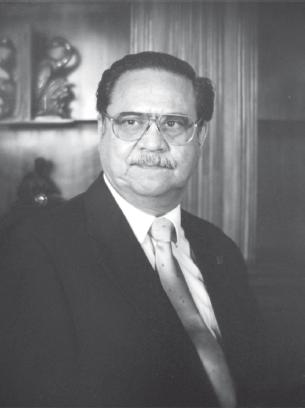 Salvador Contreras-B., now an emeritus professor at the University of Nuevo Leon in Monterrey, Mexico, has long pioneered research and management of Mexican native fishes. His former students and associates are now the backbone of Mexico’s conservation efforts as they have assumed positions at universities in other areas of Mexico. Dr. Contreras completed his graduate research at Tulane University under tutelage of legendary Royal D. (Sut) Suttkus. Salvador arranged and hosted the Council’s first meeting outside of the United States, held at the University of Nuevo Leon in November 1980. There were many highlights at this meeting, foremost being an outstanding series of papers presented in Spanish by his students (the first such an experience for many of us), superb banquets and barbecues, and an unforgettable field trip to Cuatrociénegas in the State of Coahuila, perhaps the most diverse ecosystem (in terms of biological endemism) in North America. In retirement, Salvador continued his work with Mexican fishes. He passed away in 2009: http://Salvador Contreras Balderas
Salvador Contreras-B., now an emeritus professor at the University of Nuevo Leon in Monterrey, Mexico, has long pioneered research and management of Mexican native fishes. His former students and associates are now the backbone of Mexico’s conservation efforts as they have assumed positions at universities in other areas of Mexico. Dr. Contreras completed his graduate research at Tulane University under tutelage of legendary Royal D. (Sut) Suttkus. Salvador arranged and hosted the Council’s first meeting outside of the United States, held at the University of Nuevo Leon in November 1980. There were many highlights at this meeting, foremost being an outstanding series of papers presented in Spanish by his students (the first such an experience for many of us), superb banquets and barbecues, and an unforgettable field trip to Cuatrociénegas in the State of Coahuila, perhaps the most diverse ecosystem (in terms of biological endemism) in North America. In retirement, Salvador continued his work with Mexican fishes. He passed away in 2009: http://Salvador Contreras Balderas
1984 to 1985. W.L. Minckley.
Along with Carl Hubbs and Bob Miller, Minckley has contributed perhaps more than anyone else to the cause of native fish conservation in the American Southwest and northern Mexico. Much of this work is reflected in his book (co-edited with Jim Deacon): Battle Against Extinction: Native Fish Management in the American West. Minckley, a professor of zoology at Arizona State University, has produced a remarkable series of graduate students, philosophically and academically conditioned to carry on his legendary and highly productive traditions. Three of his doctoral students (Jim Johnson, John Rinne, and Dean Hendrickson) have served as Council chairmen. Minck retained a strong interest in Cuatrociénegas and worked actively with the local community leaders to conserve its biological integrity. He was a primary contributor and motivator in production of Robert Rush Miller’s book on Mexican fishes, working on that project until his untimely death in 2001.
1986 to 1987. Gail C.Kobetich.
Gail Kobetich spent most of his career with the U.S. Fish and Wildlife Service working to preserve endangered species and ecosystems, while headquartered in Parker, Arizona; Las Vegas, Nevada; and Sacramento and Carlsbad, California. Although semi-retired in Sacramento, he is again working on endangered species problems (in Arizona) in close contact with Secretary of Interior Bruce Babbitt. Motivated by a strong environmental ethic, Gail has been a pillar of strength within the Council throughout its existence. Gail obtained his graduate degree at the University of New Mexico.
1988 to 1989. Paul B. Holden.
Paul Holden was the Council’s first “private sector” chairman, representing Bio/West, an environmental consulting firm in Logan, Utah. Paul and his staff have conducted extensive research on endangered fishes of the Colorado River, and laid groundwork for much of the current recovery effort. He also made resources of Bio/West available to the Council and prepared for publication a compendium of Proceedings Volume 3-9, which covers most of the Council’s first decade of existence. Paul completed his doctoral studies at Utah State University.
1990 to 1991. Jack Williams.
Jack was a doctoral student of Carl Bond at Oregon State University, following work with W.L. Minckley at Arizona State University and Jim Deacon at the University of Nevada, Las Vegas. Jack offers an unusual ability to communicate effectively within a variety of agencies and viewpoints. He worked for several years in the Sacramento Office of the U.S. Fish and Wildlife Service specializing in endangered fishes, then moved to Washington, D.C., where he served as Fisheries Program Manager for the Bureau of Land Management, then later as science adviser to BLM’s Director. After a stint in Boise, Idaho as a senior ecologist with BLM, Jack is currently working as assistant supervisor of Boise National Forest.
1992 to 1993. John N. Rinne.
Following his graduate studies with W.L. Minckley at Arizona State University, John began his work in desert fish research and conservation with the U.S. Forest Service, for many years with Rocky Mountain Forest and Range Experiment Station in Tempe, Arizona, and more recently in Flagstaff. His research programs have been as varied as species studied, ranging from cyprinodonts and cyprinids to Gila and Apache trouts. John’s research lends badly needed input into fishery-related decisions of the Forest Service, a multiple use agency. His research interests extend well into Mexico.
1994 to 1995. Dean A. Hendrickson.
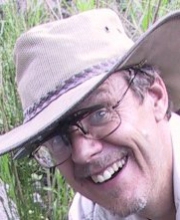 Another of W.L. Minckley’s students, Dean has been a DFC member since the late 1970’s and a life member since the late 1980s. While finishing his doctorate at Arizona State University, he directed nongame fish programs for Arizona Game and Fish Department for several years before assuming a curator/faculty position in 1990 at University of Texas (Austin). At UT he oversees Texas Natural History Collections and teaches ichthyology and Natural History Museum Studies. He has a deep interest in all Southwestern fishes, and has focused research on Mexican blindcats, genus Prietella, Cuatro Ciénegas fishes, and more recently the family Ictaluridae. Fluent in Spanish, Dean serves as a liaison with Mexico and Mexican scientists. A long time researcher in Cuatrociénegas and other areas of Mexico, Dean works actively with citizens of the town of Cuatrociénegas on conservation issues, and hosted two of the Council’s meetings (2005 and 2008) there. He was responsible for incorporating computer technology into publication of Council proceedings, and served as proceedings editor from 1990 to present. He, Peter Unmack and Mike Baltzly created the DFC web pages in 1994 and he served as webmaster from then until 2008.
Another of W.L. Minckley’s students, Dean has been a DFC member since the late 1970’s and a life member since the late 1980s. While finishing his doctorate at Arizona State University, he directed nongame fish programs for Arizona Game and Fish Department for several years before assuming a curator/faculty position in 1990 at University of Texas (Austin). At UT he oversees Texas Natural History Collections and teaches ichthyology and Natural History Museum Studies. He has a deep interest in all Southwestern fishes, and has focused research on Mexican blindcats, genus Prietella, Cuatro Ciénegas fishes, and more recently the family Ictaluridae. Fluent in Spanish, Dean serves as a liaison with Mexico and Mexican scientists. A long time researcher in Cuatrociénegas and other areas of Mexico, Dean works actively with citizens of the town of Cuatrociénegas on conservation issues, and hosted two of the Council’s meetings (2005 and 2008) there. He was responsible for incorporating computer technology into publication of Council proceedings, and served as proceedings editor from 1990 to present. He, Peter Unmack and Mike Baltzly created the DFC web pages in 1994 and he served as webmaster from then until 2008.
1996 to 1997. Michael E. Douglas.
 A product of the University of Georgia’s Institute of Ecology and for many years a professor at Arizona State University before taking a position as Senior Research Scientist at Colorado State University, Mike has conducted extensive research on Colorado River fishes. He also served as program coordinator for Council symposia and initiated a badly-needed updating and revision of the Constitution and Bylaws, including a change in terminology from Chairman (or Chair) to President, a less ambiguous term. In addition to many other duties, and ably assisted by his wife (Marlis), he is currently editor of Copeia, quarterly journal of the American Society of Ichthyologists and Herpetologists.
A product of the University of Georgia’s Institute of Ecology and for many years a professor at Arizona State University before taking a position as Senior Research Scientist at Colorado State University, Mike has conducted extensive research on Colorado River fishes. He also served as program coordinator for Council symposia and initiated a badly-needed updating and revision of the Constitution and Bylaws, including a change in terminology from Chairman (or Chair) to President, a less ambiguous term. In addition to many other duties, and ably assisted by his wife (Marlis), he is currently editor of Copeia, quarterly journal of the American Society of Ichthyologists and Herpetologists.
1998 to 1999. Gary Garrett.
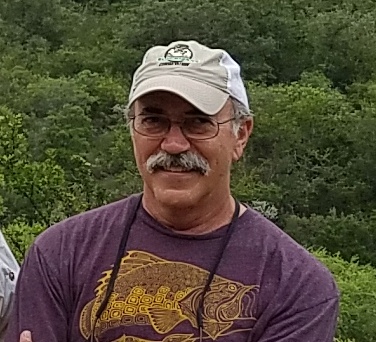 Dr. Gary Garrett is a research biologist in the Department of Integrative Biology and Biodiversity Collections at the University of Texas. From 1982 – 2013 he was a research biologist at Texas Parks and Wildlife Department and served as the Director of the Watershed Conservation Program. His interests are centered on the conservation of aquatic natural resources and he has authored more than 100 scientific publications on the subject. He has a long history of working cooperatively with private landowners, NGOs, and state and federal agencies to protect, restore and enhance critical habitats. In particular, he has worked on conservation in the Chihuahuan Desert region over a period spanning five decades. In 2016 he received the Distinguished Scientist of the Year Award from the Texas Academy of Science. He is also a Fellow of the Texas Academy of Science, Visiting Professor at Texas A&M University, and Adjunct Professor at Texas State University.
Dr. Gary Garrett is a research biologist in the Department of Integrative Biology and Biodiversity Collections at the University of Texas. From 1982 – 2013 he was a research biologist at Texas Parks and Wildlife Department and served as the Director of the Watershed Conservation Program. His interests are centered on the conservation of aquatic natural resources and he has authored more than 100 scientific publications on the subject. He has a long history of working cooperatively with private landowners, NGOs, and state and federal agencies to protect, restore and enhance critical habitats. In particular, he has worked on conservation in the Chihuahuan Desert region over a period spanning five decades. In 2016 he received the Distinguished Scientist of the Year Award from the Texas Academy of Science. He is also a Fellow of the Texas Academy of Science, Visiting Professor at Texas A&M University, and Adjunct Professor at Texas State University.
2000 to 2001. David Propst.
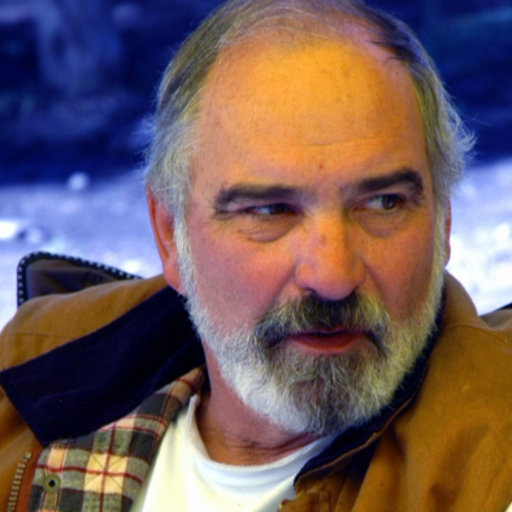 After completing his Ph.D. at Colorado State University, David began his professional career with New Mexico Department of Game and Fish, where he remains. In this position he conducts research on NM native fishes and is involved with recovery and management efforts for state- and federally-listed fishes. A member of DFC for more than 20 years, he served as Area Coordinator for New Mexico (Upper/Middle Rio Grande) and Student Awards chair before becoming DFC president.
After completing his Ph.D. at Colorado State University, David began his professional career with New Mexico Department of Game and Fish, where he remains. In this position he conducts research on NM native fishes and is involved with recovery and management efforts for state- and federally-listed fishes. A member of DFC for more than 20 years, he served as Area Coordinator for New Mexico (Upper/Middle Rio Grande) and Student Awards chair before becoming DFC president.
2002 to 2003. Paul Marsh.
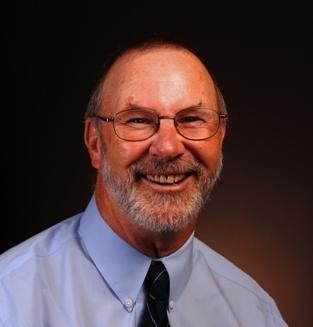 Paul came to Arizona State University in 1980 from St. Paul, where he was graduated with a Doctorate in Fisheries from the University of Minnesota. Since then he has been conducting research and management in behalf of native fish conservation throughout the arid southwest. He has published extensively in the professional literature, authored three U.S. Fish and Wildlife Service recovery plans, and written numerous reports. Paul served the Council for many years as Membership Secretary until relinquishing that post to take over as President. He was elected leader of the USFWS (Region 2) Desert Fishes Recovery Team (now disbanded) and is active on native fish committees of the American Fisheries Society. Among many other roles he serves as Technical Advisor to U.S. Bureau of Reclamation and USFWS, and is Associate Editor (Fishes) for the Western North American Naturalist (formerly Great Basin Naturalist).
Paul came to Arizona State University in 1980 from St. Paul, where he was graduated with a Doctorate in Fisheries from the University of Minnesota. Since then he has been conducting research and management in behalf of native fish conservation throughout the arid southwest. He has published extensively in the professional literature, authored three U.S. Fish and Wildlife Service recovery plans, and written numerous reports. Paul served the Council for many years as Membership Secretary until relinquishing that post to take over as President. He was elected leader of the USFWS (Region 2) Desert Fishes Recovery Team (now disbanded) and is active on native fish committees of the American Fisheries Society. Among many other roles he serves as Technical Advisor to U.S. Bureau of Reclamation and USFWS, and is Associate Editor (Fishes) for the Western North American Naturalist (formerly Great Basin Naturalist).
2004 to 2005. Jim Brooks.
Jim is a native Arizonan, completing his education at University of Arizona and working for Arizona Game and Fish Department for eight years. In Arizona, Jim held positions related to largemouth bass research on Lake Mead, district wildlife manager with law enforcement responsibilities, nongame (including native) fisheries management, and even the dubious honor of urban recreational fisheries management. Moving on to the U.S. Fish and Wildlife Service in 1985, Jim has since assumed the responsibility for management of a fisheries field office responsible for native and recreational fisheries management, endangered species recovery, and tribal fisheries management assistance. A member of DFC for more than 20 years, Jim has participated in the presentation of student awards and as Area Coordinator for New Mexico (Upper/Middle Rio Grande).
2006 to 2007. Nathan Allan.
Nathan has a biology degree from Abilene Christian University in Abilene, Texas, and worked under Dr. Gene Maughan for his master’s from the University of Arizona. Nathan began his career with the U.S. Fish and Wildlife Service, New Mexico Fishery Resources Office, directing field investigations on native fishes in the Pecos River. After several years with the Army Corps of Engineers in Albuquerque, he returned to work for the USFWS, Austin Ecological Services Field Office, in 1997 as lead biologist for conservation of threatened and endangered aquatic biota in the deserts of west Texas. Nathan has been an active DFC member since the early 1990’s, contributing in many ways such as serving as local host for the 2001 meeting in Alpine, Texas and editing the special symposium volume that came out of that event, and later organizing the van pools that transported members from Austin and San Antonio to the 2005 meeting in Cuatro Ciénegas.
2008 to 2009. Stewart Reid.
Stewart got his start in 1969 under the mentorship of Al Castro at Steinhart Aquarium in San Francisco, when, at the ripe age of 13, he walked in the backdoor and volunteered to clean fish tanks (including Devil’s Hole Pupfish). In 1972 he moved on for a stint at West Berlin Aquarium before entering U.C. Berkeley. From 1979-1985 Stewart worked on neotropical freshwater fishes as a research associate with Universidad Nacional Experimental de los Llanos in Venezuela, earning his M.S. with Jamie Thomerson at Southern Illinois University in 1986. There he met Holli Hanalei and set off for the University of Hawaii where he received his Ph.D. with Richard Young working on mesopelagic fishes. In 1997 he ended up back in the West to work on native fishes as a conservation biologist with U.S. Fish and Wildlife. In 2004, Stewart established Western Fishes, which specializes in the biology and stewardship of western fishes. His current research includes numerous projects on the conservation biology and biogeography of native fishes, the systematics and conservation of western lampreys, control of non-native species, and promoting stream stewardship in rural communities. A life member of the Desert Fishes Council, Stewart served as Area Coordinator for Oregon/northern California and as Program Secretary (2004-2007).
2010 to 2013. Heidi Blasius
Heidi Blasius served two terms (2009-2013) as the Council’s first woman president. During her presidency, Heidi worked with family members of the late W. L. Minckley to establish the W. L. Minckley Conservation Award to honor her former graduate professor. The award recognizes individuals or organizations whose work has significantly influenced the conservation of desert aquatic ecosystems and/or the native organisms dependent on them. Heidi focused much of her time as President on outreach and education, which resulted in the establishment of a networking session for DFC student members during the annual meeting. Heidi also worked with local elementary schools during the annual meetings to increase awareness of the plight of desert fishes and their habitats. As part of her outreach and education emphasis, a Desert Fishes Facebook page was created to further spread the mission of the Council and to engage members and non-members alike with updates on desert species, work projects, and annual meetings.
2014 to 2015. Kathyrn Boyer
2016 to 2017. Michael Bogan
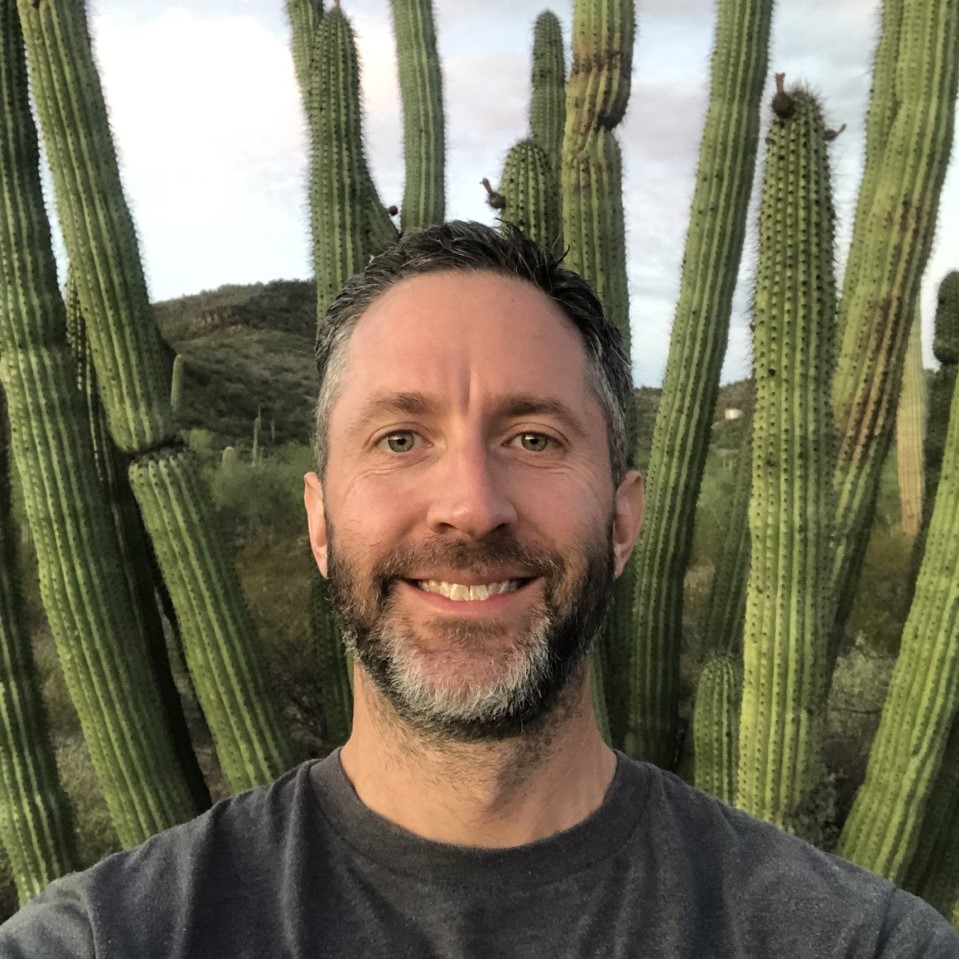 Michael grew up in the Midwest and Washington state, but fell in love with desert streams when he moved to southern California. He started his career in desert streams with the California Department of Fish and Wildlife in the illustrious Region 6 office in Bishop. Michael also spent several years working as a research associate at UC Santa Barbara’s Sierra Nevada Aquatic Research Lab in Mammoth Lakes, CA. He studies the ecology of desert streams, focusing on aquatic invertebrates, fish, amphibians, and reptiles. Michael attended California State University Monterey Bay for his undergrad degree and Oregon State University for his graduate degrees. He currently is a faculty member in the School of Natural Resources and the Environment at the University of Arizona. Before being elected DFC President, Michael previously served on the ExComm as the Member-at-Large (2013-2015).
Michael grew up in the Midwest and Washington state, but fell in love with desert streams when he moved to southern California. He started his career in desert streams with the California Department of Fish and Wildlife in the illustrious Region 6 office in Bishop. Michael also spent several years working as a research associate at UC Santa Barbara’s Sierra Nevada Aquatic Research Lab in Mammoth Lakes, CA. He studies the ecology of desert streams, focusing on aquatic invertebrates, fish, amphibians, and reptiles. Michael attended California State University Monterey Bay for his undergrad degree and Oregon State University for his graduate degrees. He currently is a faculty member in the School of Natural Resources and the Environment at the University of Arizona. Before being elected DFC President, Michael previously served on the ExComm as the Member-at-Large (2013-2015).
2018 to 2019. Krissy Wilson
2020 to 2021. Megan Bean
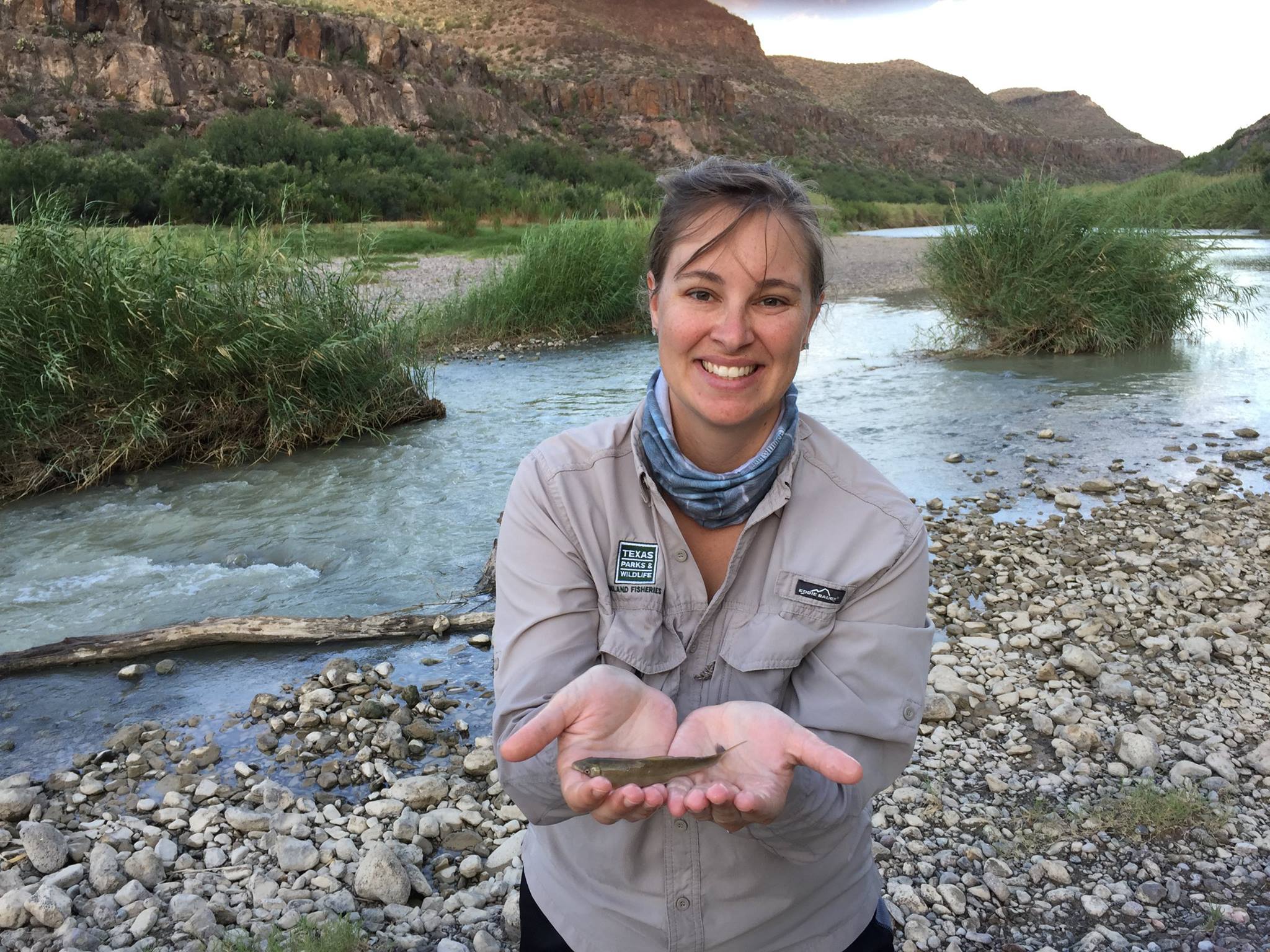
Megan Bean grew up as an urban youth in the Dallas/Fort Worth area. Her first introduction to fish and fishing in Texas was in High School when Preston Bean took her fishing on the Brazos River. Megan initially studied Chemistry and Physics but after tagging along as field help on Preston’s M.S. fish research project, she met with her advisor and quickly switched her major to study aquatic science and conservation. She completed a M.S. at Texas State University studying fish in the Rio Grande and Pecos watersheds and then started a position with Texas Parks and Wildlife Department. In this position, she worked under Gary Garrett who mentored her and shared a conservation ethic and love for aquatic systems and fish of Texas. Megan is currently the Native Fish Coordinator for the Chihuahuan Desert region in Texas in which she coordinates the planning, design, and implementation of landscape-scale habitat restoration, enhancement, and preservation projects in priority rivers and associated watersheds. She also conducts research projects; works collaboratively with university and other research partners; provides technical guidance on conservation best management practices to landowners and local community partners to support healthy rivers, natural habitat conditions, sustainable native fish populations, and high-quality conservation-oriented recreational activities in Texas rivers. She is an active member in the Desert Fishes Council and Desert Fish Habitat Partnership. She loves spending time in the outdoors fishing, hiking, exploring, and kayaking with Preston and her two kids.
